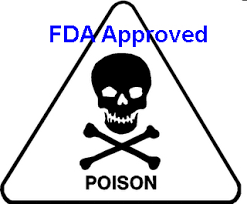Too much chemo. Too much radiation. And way too many mastectomies
“What if I decide to just do nothing?”
It was kind of a taunt, Desiree Basila admits. Not the sort of thing that usually comes out of the mouth of a woman who’s just been diagnosed with breast cancer. For 20 minutes she’d been grilling her breast surgeon. “Just one more question,” she kept saying, and her surgeon appeared to her to be growing weary. She was trying to figure out what to do about her ductal carcinoma in situ (DCIS), also known as Stage 0 breast cancer, and she was already on her second opinion. The first surgeon had slapped a photograph of her right breast onto a viewer, pointed to a spot about 5 cm long and 2.5 cm wide and told her there was a slot open the following week for a mastectomy.
Basila’s first reaction to her diagnosis was an animal-instinct panic that she registered as “10,000 bricks” crushing into her chest when she woke up in the morning. After that, Basila, who is now 60 and teaches high school science in San Francisco, did a little research. She learned that there were a lot of unknowns about the progression of DCIS, which is noninvasive–it’s confined to the milk ducts–and is the earliest stage of breast cancer. She also learned there was some disagreement in the field about how to treat it.
She knew she wasn’t ready to have one or both of her breasts cut off. And she wasn’t sure she wanted a lumpectomy either. That’s why when Dr. Shelley Hwang, then a surgeon at the University of California, San Francisco (UCSF), recommended a lumpectomy, Basila grew frustrated. She was coat in hand and ready to walk out the door when she issued that half taunt. And when she did, Hwang said this: “Well, some people are electing to do that.”
Basila sat back down, and as their meeting reached the hour mark, she made a choice that humans are practically hardwired not to make in the face of a cancer diagnosis: she decided to do nothing.
Well, not nothing, exactly….
Breast Cancer — for a fuller discussion, click the link below
http://www.raysahelian.com/cancer.html
Breast cancer is the most common non-skin malignancy in women in the United States and is second only to lung cancer as a cause of cancer-related deaths.
A high-fiber low-fat diet reduces blood levels of estrogen in women with breast cancer, researchers report. This may help keep the disease in check, as breast cancers are sometimes driven by female hormones.
Even moderate physical activity over the course of a lifetime can reduce a young woman’s risk.
Having breast cancer tissue sampled with a needle seems to increase the odds that disease will also be found in an armpit lymph node called the sentinel node, new research suggests. The spread of breast cancer to the sentinel node adversely affects a woman’s survival and influences the treatment received. As reported in the Archives of Surgery, Dr. Nora M. Hansen of the John Wayne Cancer Institute at Saint John’s Health Center, Santa Monica, California hypothesized that the method used to obtain specimens from the breast tumor might influence the spread of cancer to the sentinel node. To investigate, the researchers studied 663 women with proven breast cancer. Of the cancers, about half were biopsied with a needle, while the remainder involved actual removal of the tumor. Women who had a needle biopsy were about 50 percent more likely to have cancer in the sentinel node than women who underwent tumor removal. The researchers suggest that the increased risk of sentinel node disease may be “due in part to the mechanical disruption of the tumor by the needle,” and they call for further studies to confirm these findings. Archives of Surgery, June 2004.
A high-fiber low-fat diet reduces blood levels of estrogen in women with breast cancer. This may help keep the disease in check, as breast cancers are sometimes driven by female hormones.
High-carb diets may increase more than just waistlines. New research suggests they might raise the risk of breast cancer.
Genistein, which has weak estrogenic and antiestrogenic properties, may be one of the the components in the soy-based Asian diet that helps prevent breast cancer by its effects on biochemistry early in life. Reduced caloric consumption by Asians may be another reason for the lower rate of breast cancer.
One test tube study indicates saw palmetto slows the growth of breast cancer cells.
Consider the following supplements: Black Cohosh, Cat’s Claw, Curcumin, Green Tea, and Melatonin. You can read more about them by clicking on the links here or at the top of the page.
Katy Whelan
Independent Consultant
ThriveLife & do’Terra Essential Oils
* Certified Holistic Wellness Coach
* Certified Technician in Aroma Touch Technique
[email protected]
720.630.3111
My DoTerra web site – http://www.mydoterra.com/katy4health/#/
Visit My Web Site for Thrive & do’TERRA
http://www.familyessentialshop.com/
Visit my Health Blog at:
http://theessentialoilwell.blogspot.com/
Source Article from http://feedproxy.google.com/~r/DaveHodges-TheCommonSenseShow/~3/tuo14s6QvsY/
 RSS Feed
RSS Feed















 November 23rd, 2015
November 23rd, 2015  Awake Goy
Awake Goy 



 Posted in
Posted in 













